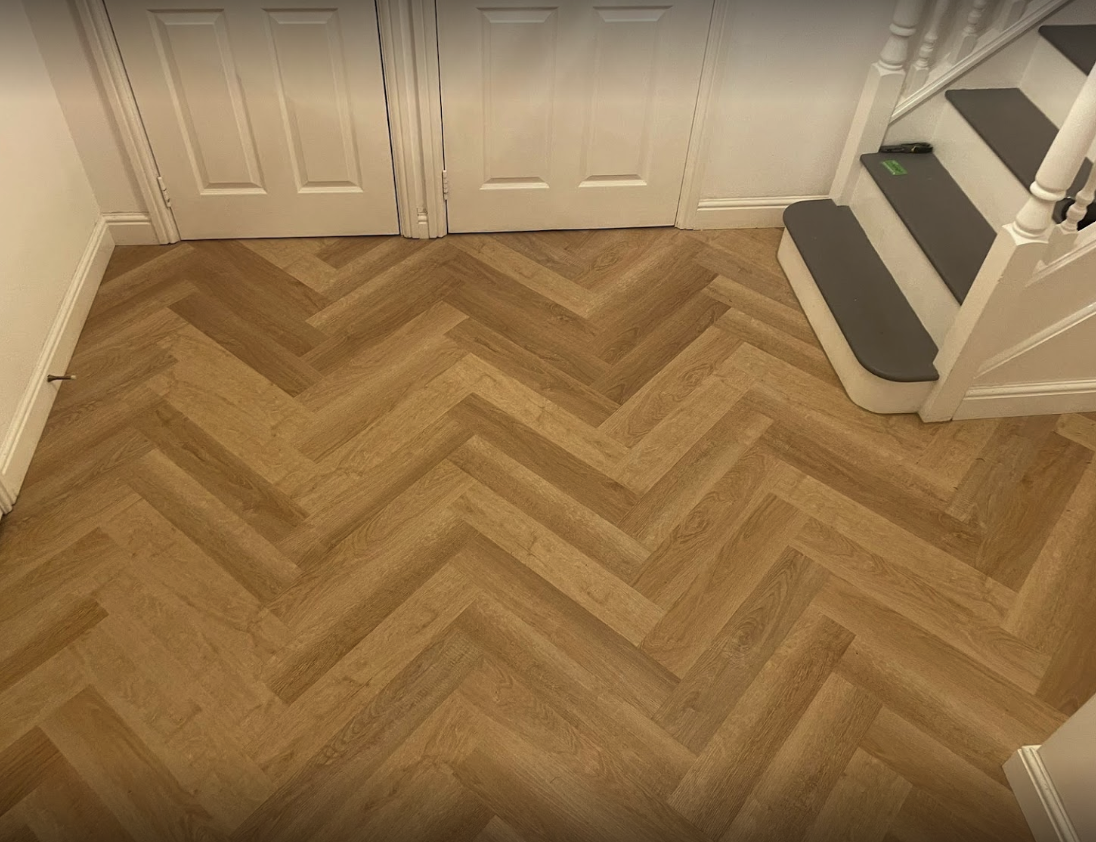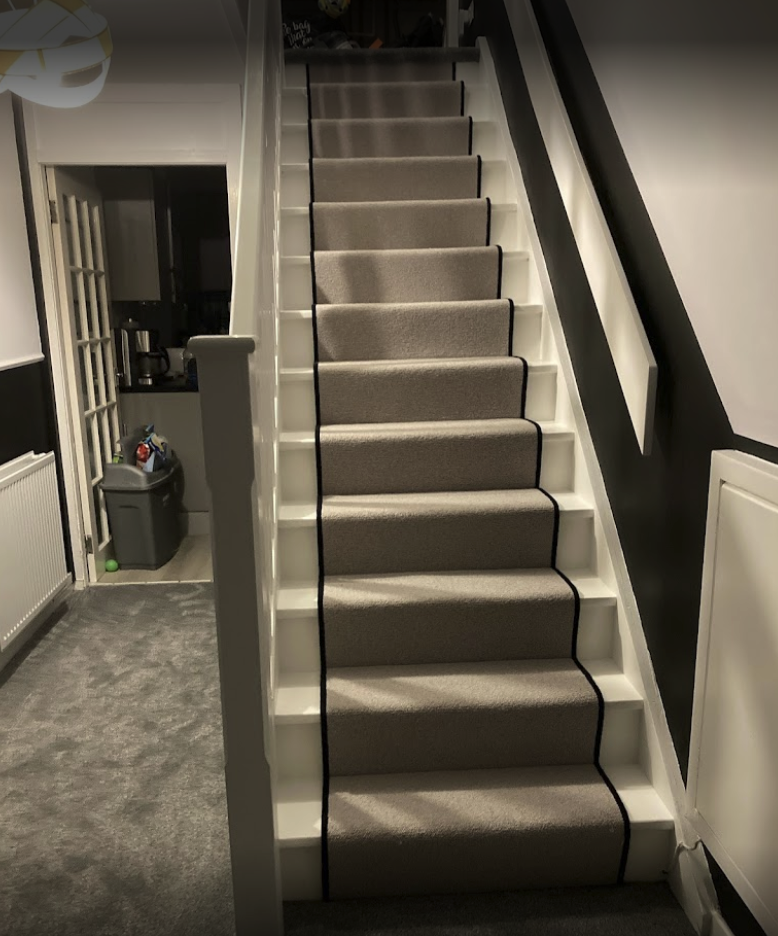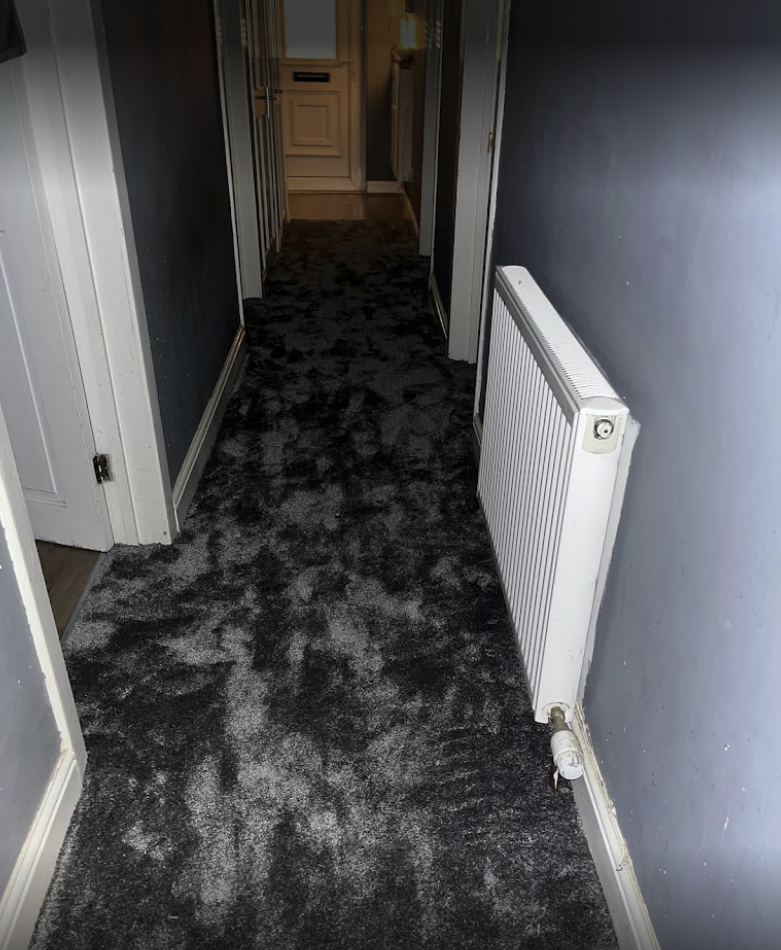Flooring Fundamental Blogs
The Ultimate Guide to Choosing the Right Flooring for Every Room

Selecting the perfect flooring for each room in your home is a crucial decision that impacts the space’s look, feel, and functionality. With so many options available, it’s essential to consider the specific requirements of each area, your lifestyle, and your budget. This guide will help you navigate through the process of choosing the ideal flooring for every room, ensuring your home is both stylish and practical.
Entryway and Hallways: Durability Meets Design
Your entryway and hallways are high-traffic areas that need durable and easy-to-clean flooring. LVT is an excellent choice due to its robustness and resistance to wear.
Living Room: Elegance and Comfort
The living room is a space for relaxation and entertainment, requiring a balance between comfort and style. Hardwood flooring is unparalleled for its timeless elegance and the value it adds to your home. Alternatively, luxury vinyl planking (LVP) provides a durable and budget-friendly option with a wide range of styles.
Kitchen: Practicality in the Heart of the Home
In the kitchen, you need flooring that can handle spills, stains, and constant foot traffic. LVT tiles or plank stand out for their water resistance and low maintenance. Sheet vinyl is also a great alternative for kitchens, sheet vinyl is durable, moisture-resistant, and easy to clean and maintain.
Bedrooms: A Cosy Escape
Comfort is key in bedrooms, making carpeting a popular choice for its softness and sound insulation. Carpets help to reduce outside noise and give a soft cushion feel underfoot.
Bathrooms: Combining Function with Style
Water resistance is crucial in bathrooms, making LVT ideal for its durability and ease of cleaning. Luxury vinyl tiles (LVT) is a great option, offering the aesthetic appeal of wood or stone with complete waterproof properties.
Garages and Utility Areas: Prioritising Durability
Flooring in garages and utility areas must withstand moisture and potential flooding. Vinyl tiles or planks are suitable, providing a waterproof and hard-wearing surface that’s easy to install.
Making the Right Choice
Beyond aesthetics, consider the feel underfoot, room acoustics, and long-term maintenance of your flooring. The best choice will align with your lifestyle, budget, and the overall character of your home.
In summary, selecting the right flooring for each room involves balancing functionality, style, and affordability. With the guidance provided here, you’re equipped to make informed decisions that will enhance the beauty and value of your home. Whether you prefer the classic elegance of hardwood or the practicality of vinyl, ensure your flooring choices reflect both your needs and personal style.
Flooring Installation Mistakes to Avoid: Tips from the Experts

Embarking on a new flooring installation project can transform your space, but it’s fraught with potential pitfalls that could turn your renovation dream into a bit of a nightmare. Whether you’re opting for lush carpet, elegant hardwood, or practical laminate, being aware of common flooring installation mistakes is crucial. Our experts have compiled essential tips to help you navigate the process smoothly, ensuring your new floor looks impeccable and stands the test of time.
1. Skipping Proper Floor Preparation
The first step, often overlooked, is adequately preparing your subfloor. This foundation must be clean, level, and dry to ensure a successful installation. Any debris, dust, or moisture can cause significant issues, from uneven surfaces to mould growth under your new flooring. For example, hardwood floors require a moisture level check to prevent warping post-installation. Investing time in subfloor preparation can save you from costly corrections down the line.
2. Neglecting to Acclimatise Your Flooring
Another critical step is allowing your flooring materials to acclimatise to your home’s environment. This process involves leaving the flooring in the room where it will be installed for several days, allowing it to adjust to the room’s temperature and humidity levels. Failure to do so, particularly with wood or laminate, can lead to expansion or contraction post-installation, causing gaps or buckling.
3. Incorrect Measurements and Cutting Errors
“Measure twice, cut once,” as the saying goes, is sage advice in the world of flooring installation. Inaccurate measurements can lead to wastage of materials or, worse, a shortage of flooring to complete the project. Ensure you measure your space meticulously and consider obstacles such as cabinets or fireplaces. Additionally, when cutting, always use the appropriate tools and techniques for your specific flooring type to avoid chips or uneven edges.
4. Overlooking the Direction of Lay
The direction in which you lay your flooring can dramatically affect the appearance and feel of a room. For example, laying planks parallel to the longest wall can make a room appear larger. However, this decision should also consider natural light sources and the room’s primary entry points. An expert tip is to lay out some of the flooring first to see how it looks at different times of the day and from various angles before making a final decision.
5. Ignoring Expansion Gaps
Flooring materials expand and contract with changes in temperature and humidity. Failing to leave adequate expansion gaps around the room’s perimeter can lead to your flooring buckling over time. These gaps are usually hidden by skirting boards or transition strips, so they won’t affect the look of your finished floor but are crucial for its longevity.
6. Inadequate Adhesive Use or Incorrect Underlay
Each flooring type has its specific adhesive requirements or underlay. Using the wrong type or amount can result in flooring that doesn’t stick properly or feels uncomfortable underfoot. For instance, a high-quality underlay can make laminate flooring feel more solid and reduce noise levels, while the right adhesive is critical for vinyl tiles to prevent them from lifting.
7. Rushing the Job
Finally, one of the most common mistakes is rushing the installation process. Proper flooring installation requires patience and attention to detail. Rushing can lead to overlooked steps, poor alignment, or inadequate drying time for adhesives and finishes. Planning your project timeline with ample buffer days for each stage of the installation will help ensure a finish you can be proud of.
Conclusion
Flooring installation can dramatically enhance your home, but it requires careful planning, preparation, and execution to avoid common pitfalls. By following these expert tips and taking your time, you can achieve a professional-looking finish that not only looks fantastic but also lasts for years to come. Whether you’re a seasoned DIY enthusiast or a first-timer, remember that the devil is in the details, and sometimes, seeking professional advice or assistance is the best course of action to avoid costly mistakes.
Testimonials



